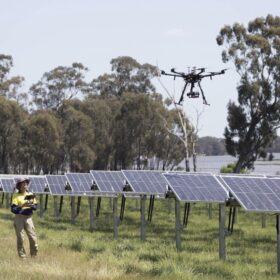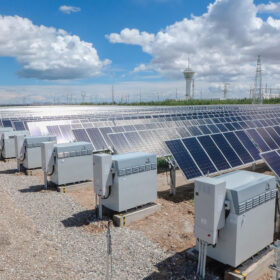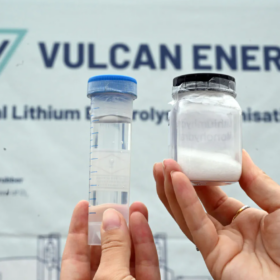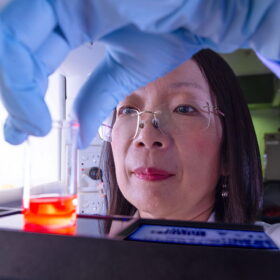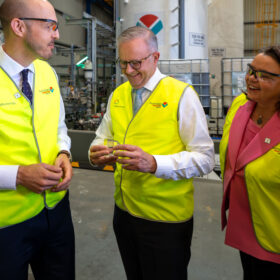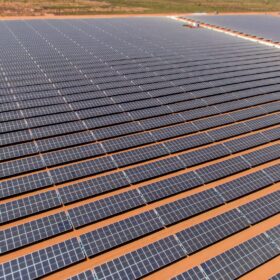XNO ultra-fast charging technology aims to decarbonise mining sector vehicles
West Australian-based industrial battery company Switch Technologies has unveiled in Perth what it describes as the world’s first operational vehicle powered by Echion Technologies’ ultra-fast charging XNO technology.
20 kW university vineyard agrisolar array tests crop yield and panel efficiency
Victoria-based renewables company Greenwood has answered the call from the University of Melbourne to install 48 solar panels at its Dookie Campus’ working vineyard, to aid research into the impact of deploying agrivoltaics on crop yield.
Lithium battery recycling study awarded share in $1 million electrification grant
The New South Wales Electrification and Energy Systems Network has awarded over $1 million in seed funding for groundbreaking projects focused on reducing carbon emissions through electrification.
Solar panel degradation under watchful eye of UNSW researchers
Daylight photoluminescence images of crystalline silicon solar panels in utility-scale arrays have been found by researchers to contain unique information about voltage variations between panels, including from degradation.
Shift to 2 kV voltage in solar projects tipped to gain traction
Amid record-low prices for solar modules, the focus of cost reduction for utility-scale solar projects is shifting to non-module balance-of-system (BoS) expenses. A transition from 1.5 kV voltage to 2 kV in solar projects is expected to gain traction through 2030.
Energy generation dominated by renewables in a nuclear future: report
The Opposition has released its nuclear energy plan modelling concluding nuclear power is up to 44% cheaper than current government scenarious but assumes renewable generation would continue to dominate in the future alongside it.
Vulcan in line for $196 million debt finance for sustainable lithium business
The Australian government agency Export Finance Australia has conditionally approved $196 million commitment to Vulcan Energy as part of their debt financing process for an integrated lithium and renewable energy project.
Renewables research benefits from $9.87 million ARC Discovery grants
The Queensland University of Technology has been awarded $9.87 million from the federal government’s funding arm, the Australian Research Council’s (ARCs) Discovery grants program, to support 16 projects, including three focussed on research in hydrogen production, perovskite cells, and lithium ion batteries.
Vanadium flow battery Project Lumina progresses, gets visit from the PM
Vanadium producer Australian Vanadium’s subsidiary VSUN Energy’s vanadium flow battery Project Lumina has progressed with the appointment of service providers GenusPlus Group, Sedgman and Austrian company CellCube.
APA begins commissioning solar farm built for cyclonic conditions
A solar farm designed to withstand sustained wind speeds of almost 300 kph and a co-located battery energy storage system has been officially opened by developer APA Group in Western Australia’s Pilbara region.



